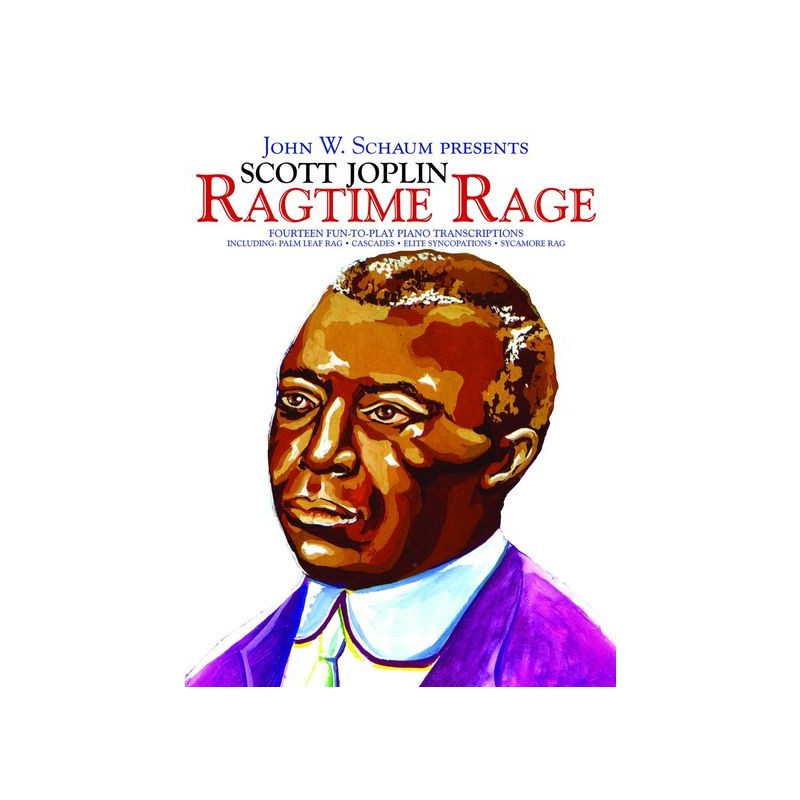
The score to his first opera A Guest of Honor was confiscated in 1903 with his belongings because of a non-payment of bills, and is now considered lost. Louis in 1901, where he continued to compose and publish music, and regularly performed in the St.
:max_bytes(150000):strip_icc()/scottjoplngettyimages-5895c27a3df78caebcabfce5.jpg)
It also brought the composer a steady income for life, though Joplin did not reach this level of success again and frequently had financial problems.

This piece had a profound influence on subsequent writers of ragtime. Joplin began publishing music in 1895, and publication of his "Maple Leaf Rag" in 1899 brought him fame. Joplin moved to Sedalia, Missouri, in 1894 and earned a living as a piano teacher there he taught future ragtime composers Arthur Marshall, Scott Hayden and Brun Campbell. He went to Chicago for the World's Fair of 1893, which played a major part in making ragtime a national craze by 1897. During the late 1880s he left his job as a laborer with the railroad, and travelled around the American South as an itinerant musician. Joplin grew up in Texarkana, where he formed a vocal quartet, and taught mandolin and guitar. Joplin was born into a musical family of railway laborers in Northeast Texas, and developed his musical knowledge with the help of local teachers. One of his first pieces, the "Maple Leaf Rag", became ragtime's first and most influential hit, and has been recognized as the archetypal rag. During his brief career, he wrote 44 original ragtime pieces, one ragtime ballet, and two operas. Joplin achieved fame for his ragtime compositions and was dubbed the "King of Ragtime Writers". Scott Joplin (1867 - 1917) was an African-American composer and pianist. These parts are all written for a 5 octave instrument.ġ Marimba (parts for both 4.3 octave and 5 octave instruments included) The second version is a fuller realization of the accompaniment part utilizing 4 mallet playing, with busier movement in the left hand mimicking the 'stride' style of ragtime playing.

Two versions of each marimba accompaniment have been included firstly a version which is playable with only 3 mallets (two in the right hand and one in the left hand) and is suitable for intermediate marimba students apart from Maple Leaf Rag, these parts have been transposed to fit on a 4.3 octave marimba. The solo parts work equally well on marimba, especially for the slower tempos, and pieces performed in this way can be played with two players on one marimba. Some double stops have been notated as optional, and can be played or left out depending on the level of the player. Green, adding frequent double stops to the melody line to create extra colour and harmony. The xylophone parts have been written in the style of G.H. The pieces contained in these volumes are intended as duets between the student and teacher, with the student playing the solo part and accompanied by their teacher on marimba.

Xylophone soloists such as George Hamilton Green and Harry Breuer expanded on the ragtime style with their own compositions for xylophone solo and became well known during the vaudeville era.Įach volume of this collection contains six of Joplin's ragtime piano solos, arranged for xylophone solo with marimba accompaniment. Although Joplin wrote all of his ragtime solos for the piano, it has long been popular to play the melody of these rags on mallet percussion. He was largely responsible for inventing and popularizing the ragtime style, writing many original ragtime compositions. By the time Joplin was in his teens, in the 1880s, he was making a living as an itinerant musician, shaping a brand new American sound.Scott Joplin (1868-1917) was known as 'The King of Ragtime' – and with good reason. A natural-born musician, Joplin absorbed a wide mix of influences, from the plantation melodies his parents played on the violin and banjo to the classical training he received from a generous local piano teacher. He was born in northeast Texas just four years after Lincoln issued the Emancipation Proclamation, one of the first Black Americans born into the promise of freedom. His short life (he died before age 50 in 1917) is almost a case study in the transformations of his time. Leaving his own indelible mark on the 20th century, Joplin was an innovator whose deceptive, irregular rhythms and nuanced harmonic language helped define the trajectory of American music during a time of rapid change and flux. Schomburg Center for Research in Black Culture/New York Public Library Female dancer in flowered dress (1935-1943)


 0 kommentar(er)
0 kommentar(er)
